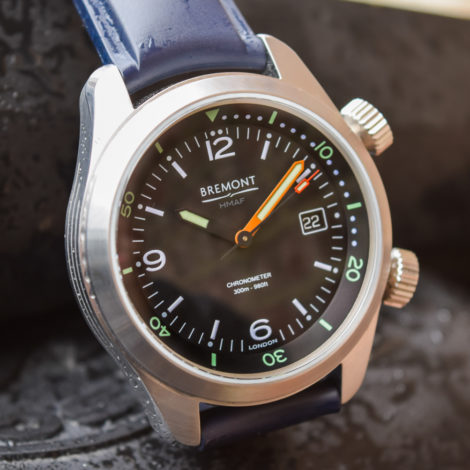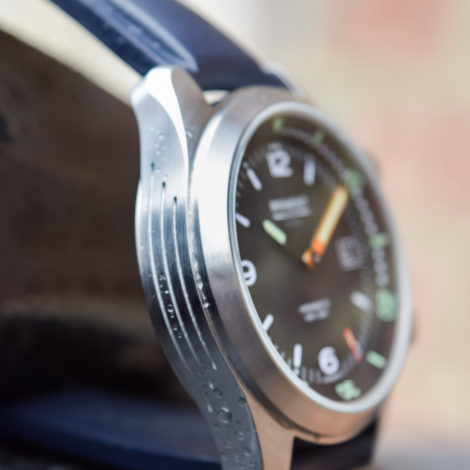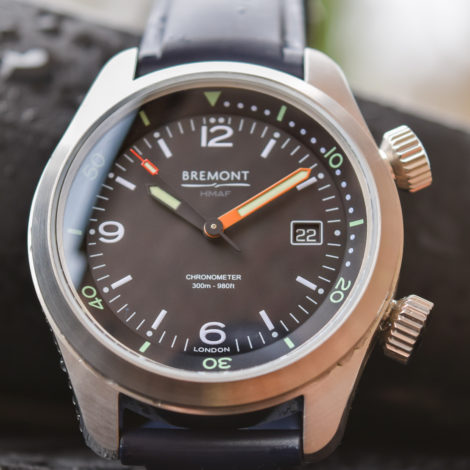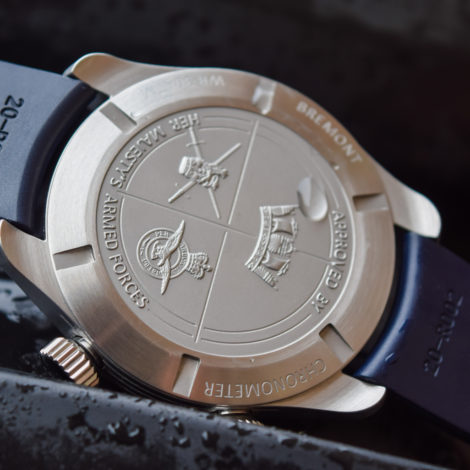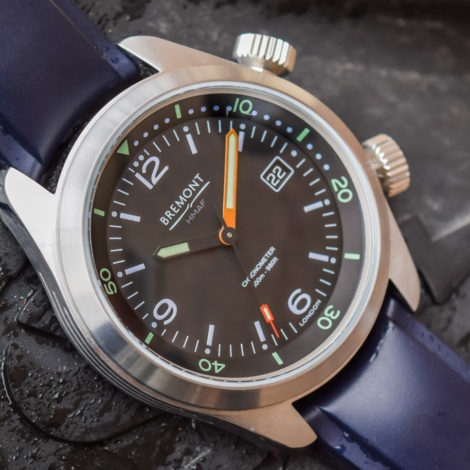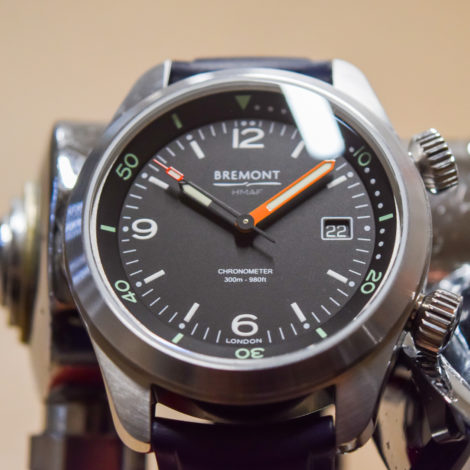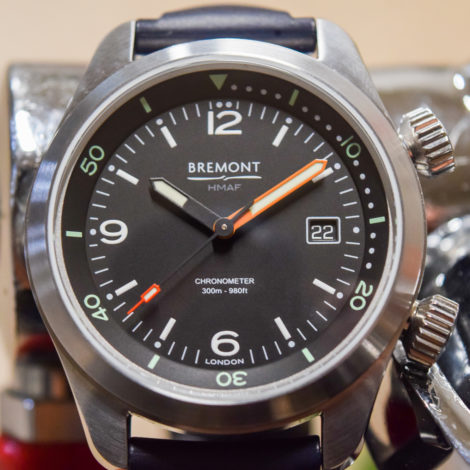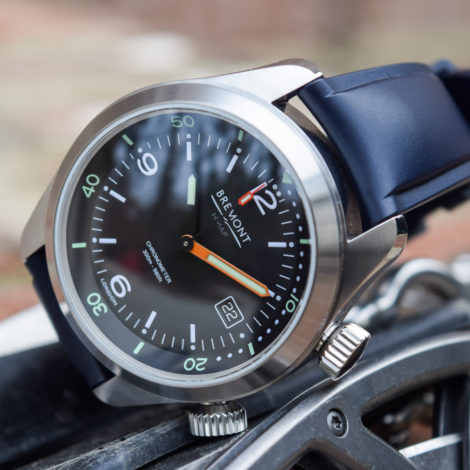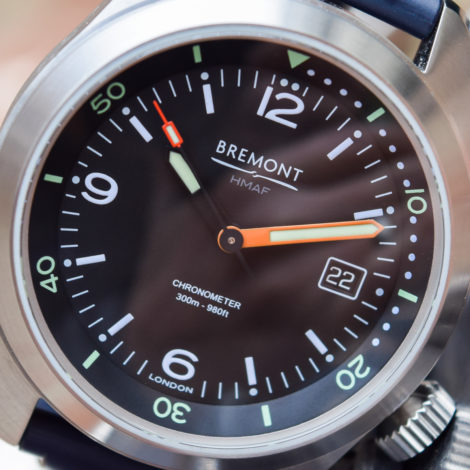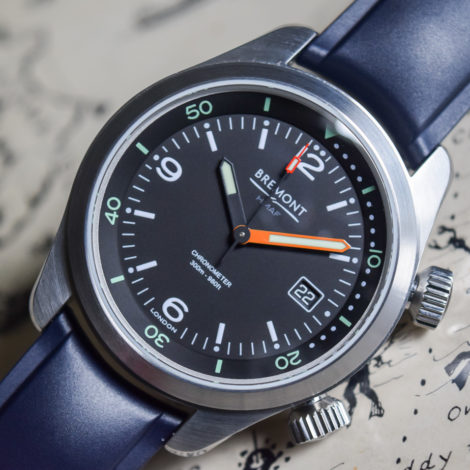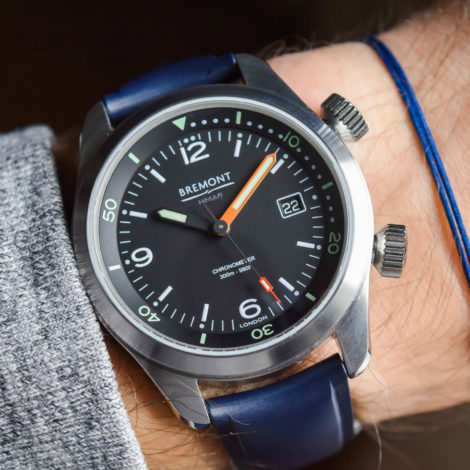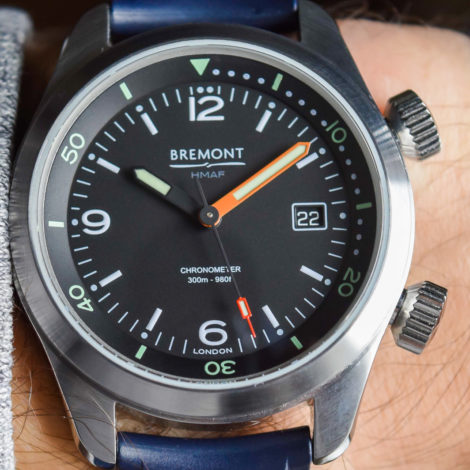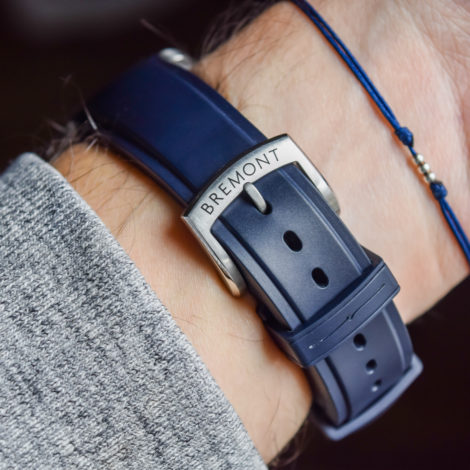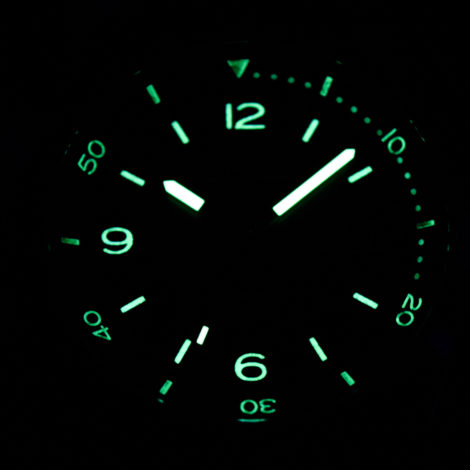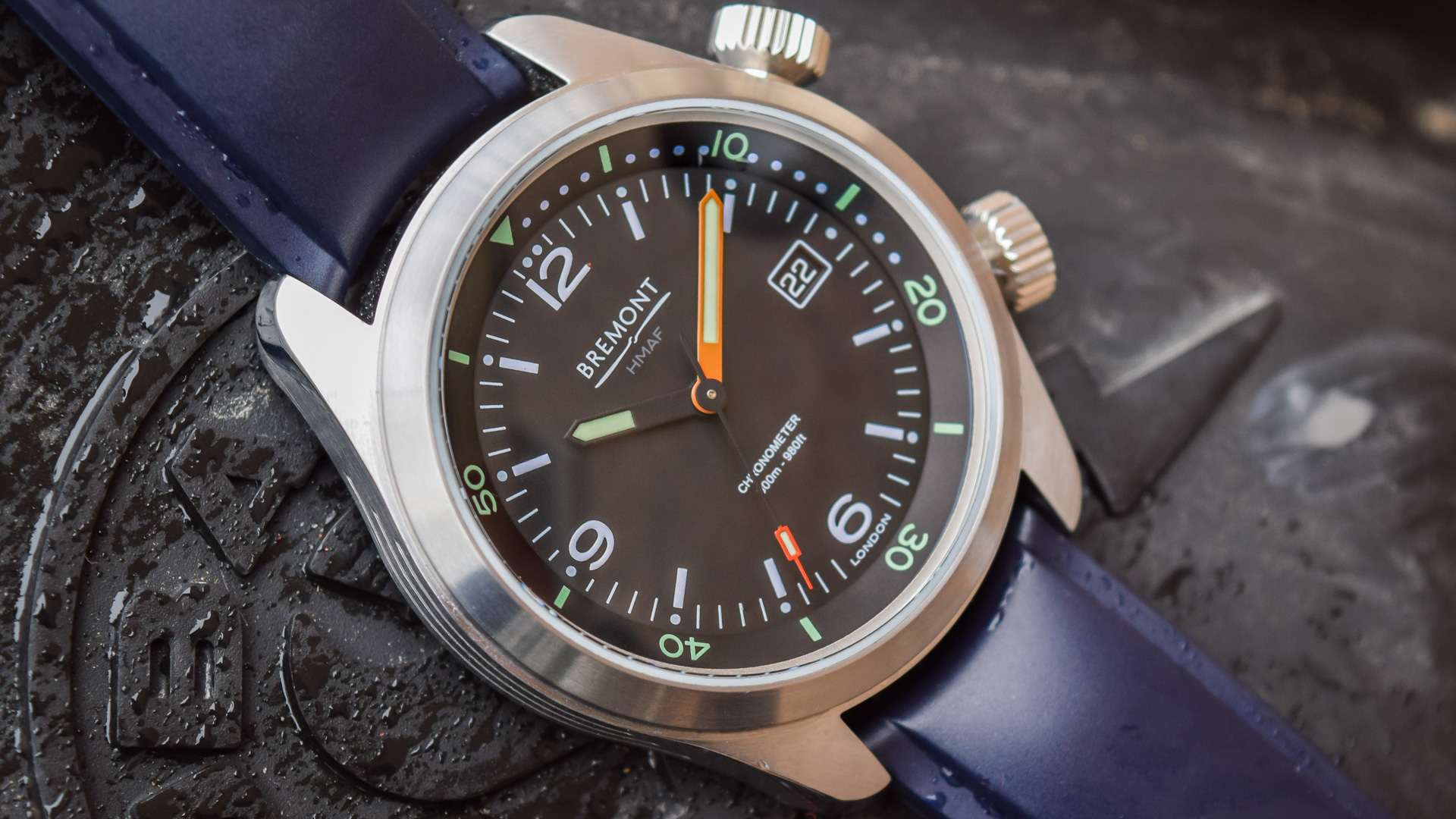
Britain’s beloved Bremont, a still youthful house in an industry boasting a slew of centenarian brands, already has a surprisingly lengthy history of producing special editions of its standard models for military units, such as the Royal Navy Clearance Divers, U.S. Air Force C-130 operators, and Royal Air Force Flight Engineers. In fact, Bremont co-founder Giles English has indicated that as much as 25 percent of Bremont’s business is with military clients. Given that important relationship, earlier this year Bremont unveiled its Her Majesty’s Armed Forces collection, a trio of watches representing and approved by Britain’s Royal Army, Navy, and Air Force.
Though not actually issued to military units, the watches have reportedly been designed in collaboration with the forces they are meant to honor, which, obvious marketing value aside, makes for a cool design concept. As a deep-sea diver and former Coast Guard search-and-rescue boat operator, I like my watches nautical. I was excited to spend some time with Bremont’s Royal Navy-inspired watch from the HMAF collection, the dual-crown Argonaut, to see how it stacks up to Bremont’s more storied diver’s watch, the S500, which I also reviewed, as well as how it is received by the diving watch community as a whole.
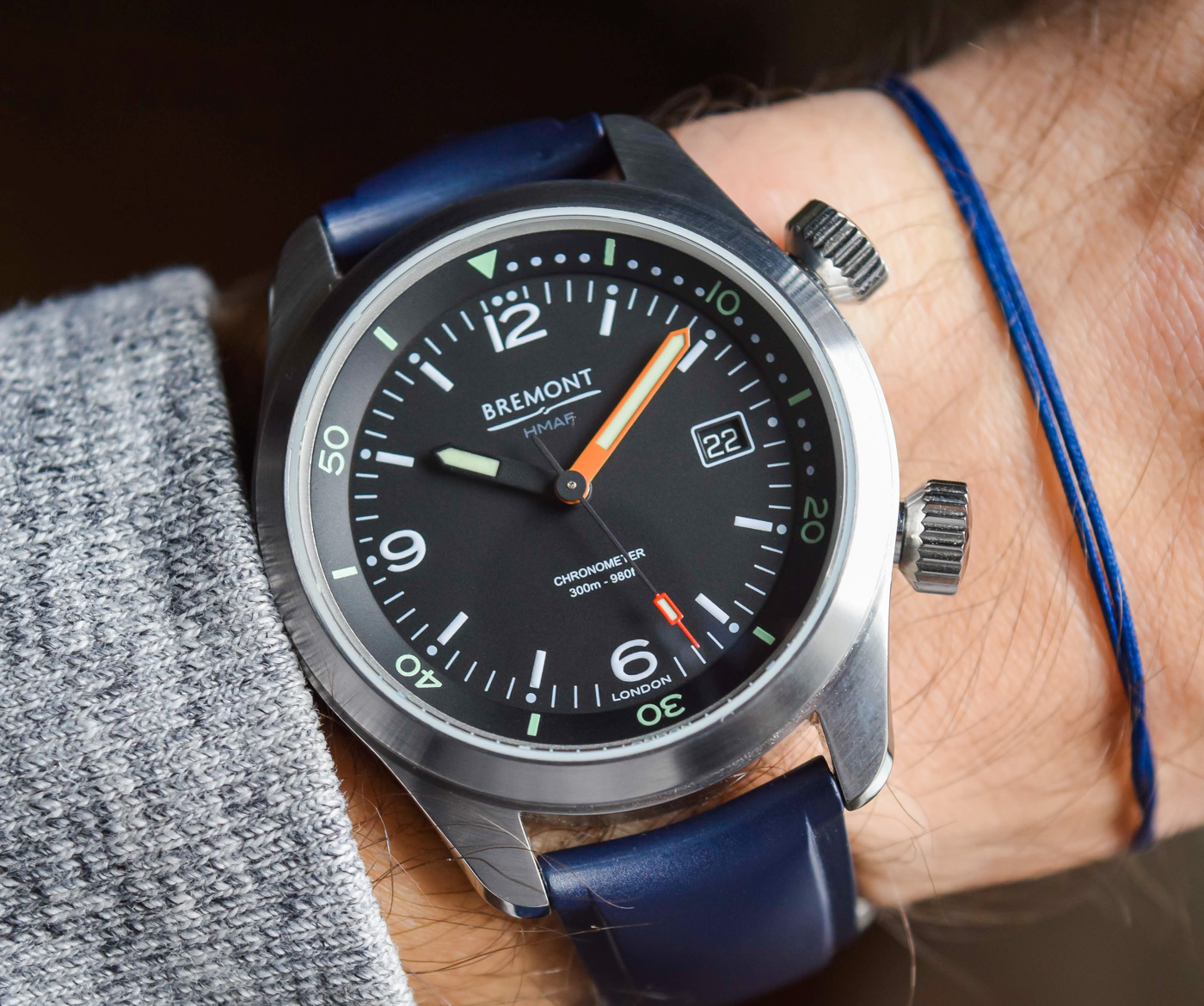
It’s important to note that, in addition to the military connection, Bremont’s HMAF collection also represents a novel, somewhat lower set of price points for modern-day Bremont, starting at $3445 for the three-hander Broadsword model. Even the Argonaut, which comes in at $3695, is still quite a bit less expensive than Bremont’s flagship diving watch, the Supermarine S500, which will set you back a cool $4695, however much that is in Great Britain’s currency (Crumpets? Biscuits, mayhaps?). So, without further ado or additional misguided attempts at humor, let’s do a deep yet subdued and tactical dive into the ocean-dwelling Bremont Argonaut, a 300-meter diver’s watch boasting an internal bezel, domed anti-reflective sapphire crystal, and a chronometer certification owed to a regulated BE-92AV automatic caliber.
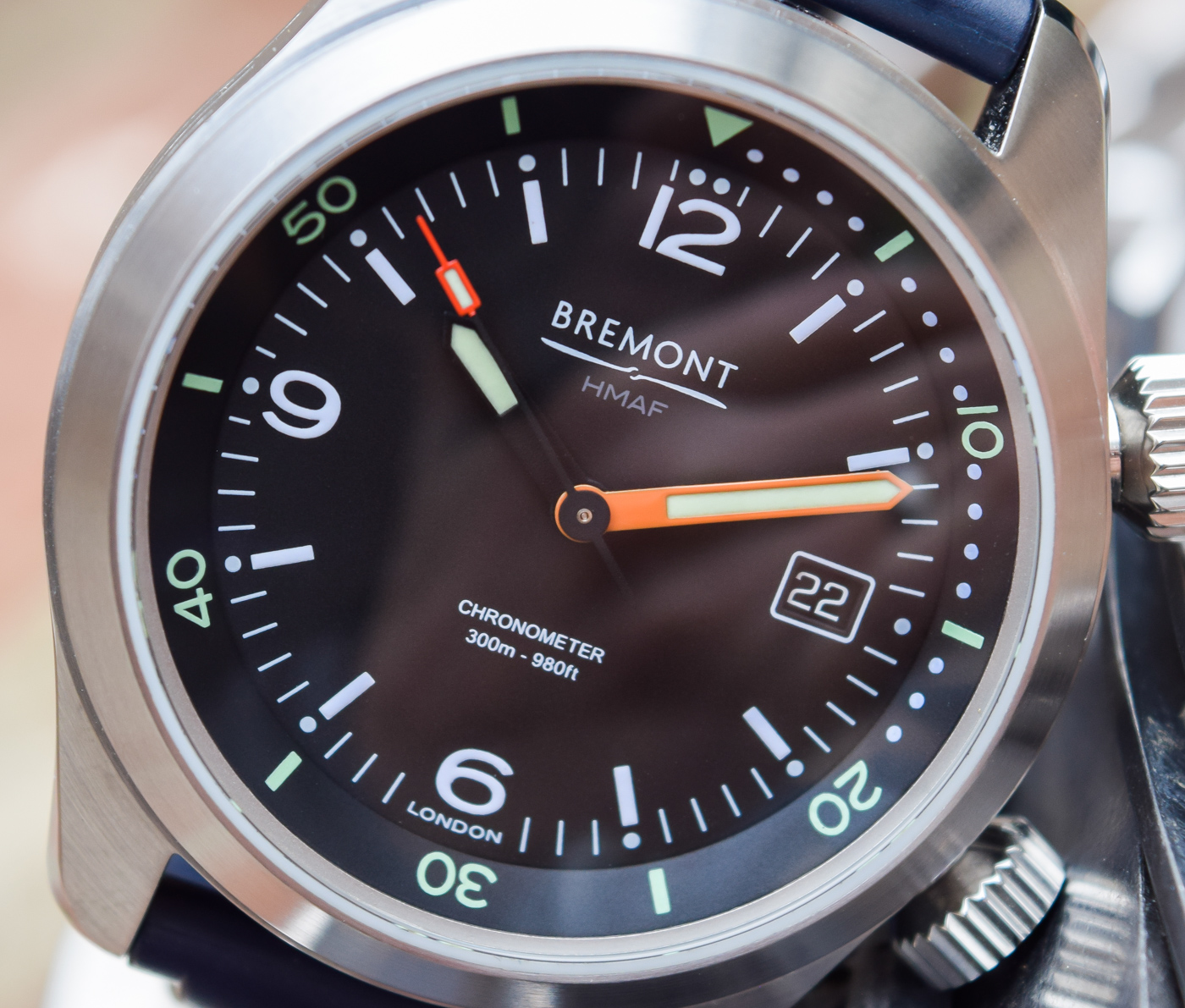
Each of the HMAF collection claims inspiration from Britain’s Dirty Dozen, a set of twelve British military-issued watches (produced by brands like IWC, JLC, and Omega, along with nine other makers), each designed to the same Ministry of Defense spec with small seconds, Arabic dials, luminous markings, and a broad arrow signature (to denote HMAF property.) These watches collectively represent an icon of military watch design, as well as the first time the British had watches specifically built for their forces. Watches from the original Dirty Dozen are much coveted by collectors of military watches, thanks to their proud history and genuine utility as a tool watch.
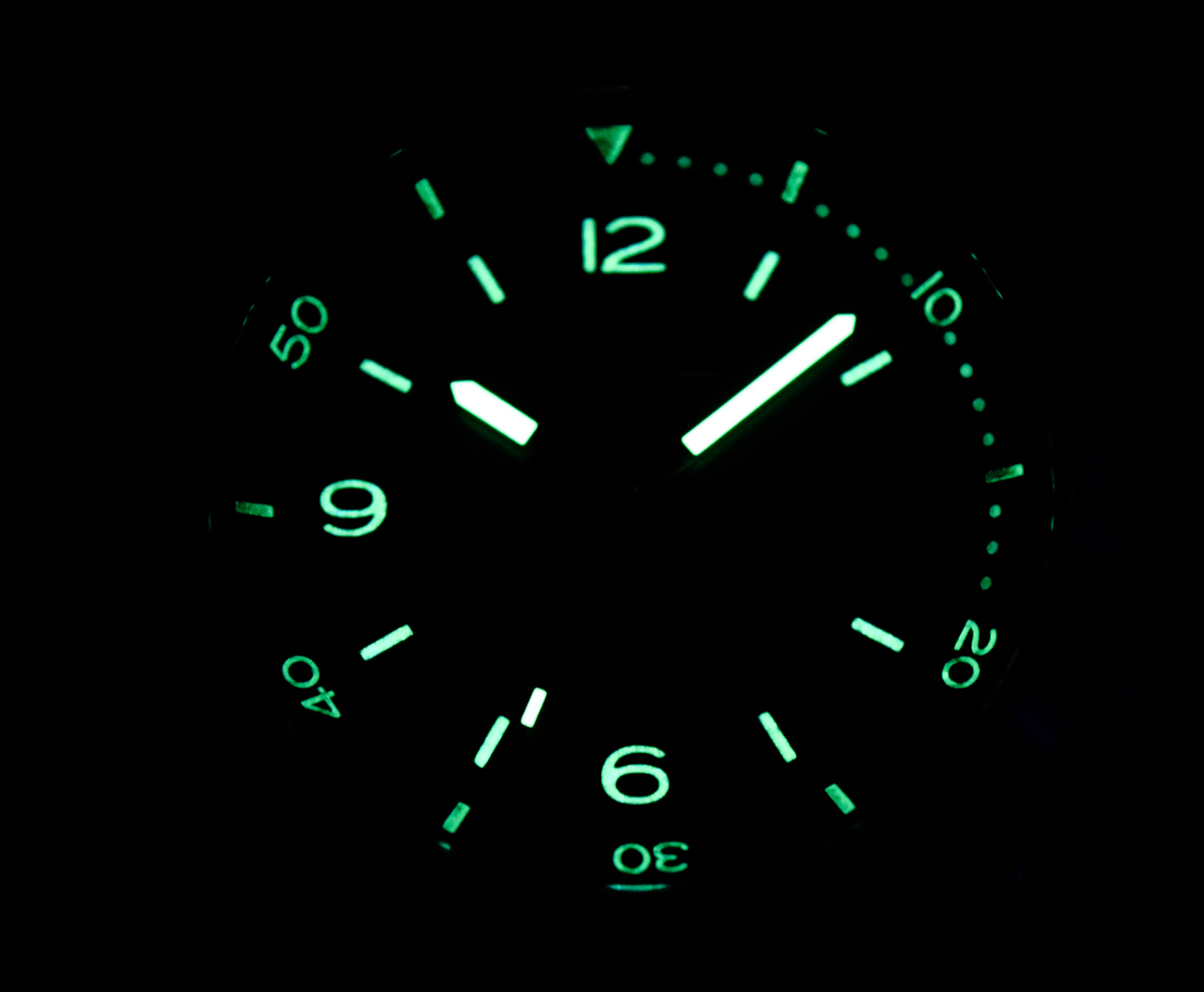
Attempting to tap into that heritage, the new Argonaut’s dial is also all business, sporting a highly legible design with Super-LumiNova-coated Arabic markings at 12, 6, and 9 o’clock, and simple, also-lumed baton indices for the remaining hour markers. Minute tracking is handled care of simple white hash lines, and dial text is pleasantly minimal with only Bremont’s signature at 12 o’clock, “HMAF” in very subtle gray text which is barely visible against the matte black dial, and “Chronometer” and “300m – 980ft” in painstakingly small text at 6 o’clock. (Boomers will need their readers.) Bremont’s Argonaut handset is also pleasantly restrained with simple stick hands, the hour hand in black and minute hand in orange for visibility-at-depth reasons, each well-coated with Super-LumiNova. A traditional date window sits at 3 o’clock, rimmed in white, and home to a white-on-black date wheel, a personal favorite of mine on any black-dialed watch.
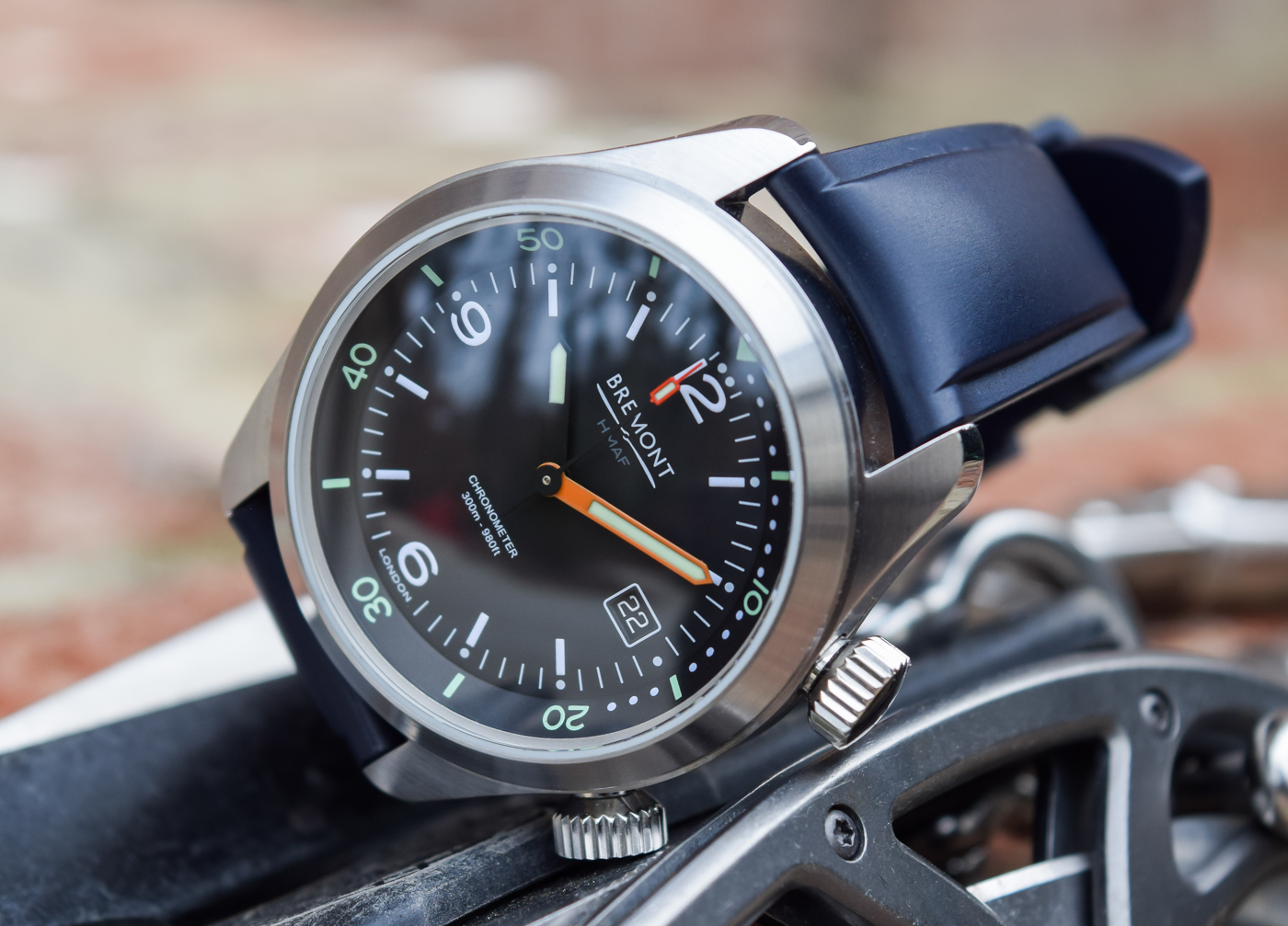
Bremont’s Argonaut, as a package, is extremely easy to read. It’s a handsome, somewhat restrained design I really grew to like through the test period. It’s a little bit vintage-inspired yet has enough modern elements to avoid looking like a reissue. Though I didn’t get a chance to take this particular Bremont diving, I expect the watch to be visible underwater, as well, assuming there’s any visibility to begin with. While the Super-LumiNova on the Argonaut’s dial, hands, and bezel is adequate and lasts through the night, for this price, I honestly expect a bit more. This is to say, the lume on the Argonaut is fine but not quite as good as on Bremont’s own S500, which I found to be a real light show deep underground and underwater beneath Detroit’s city streets.
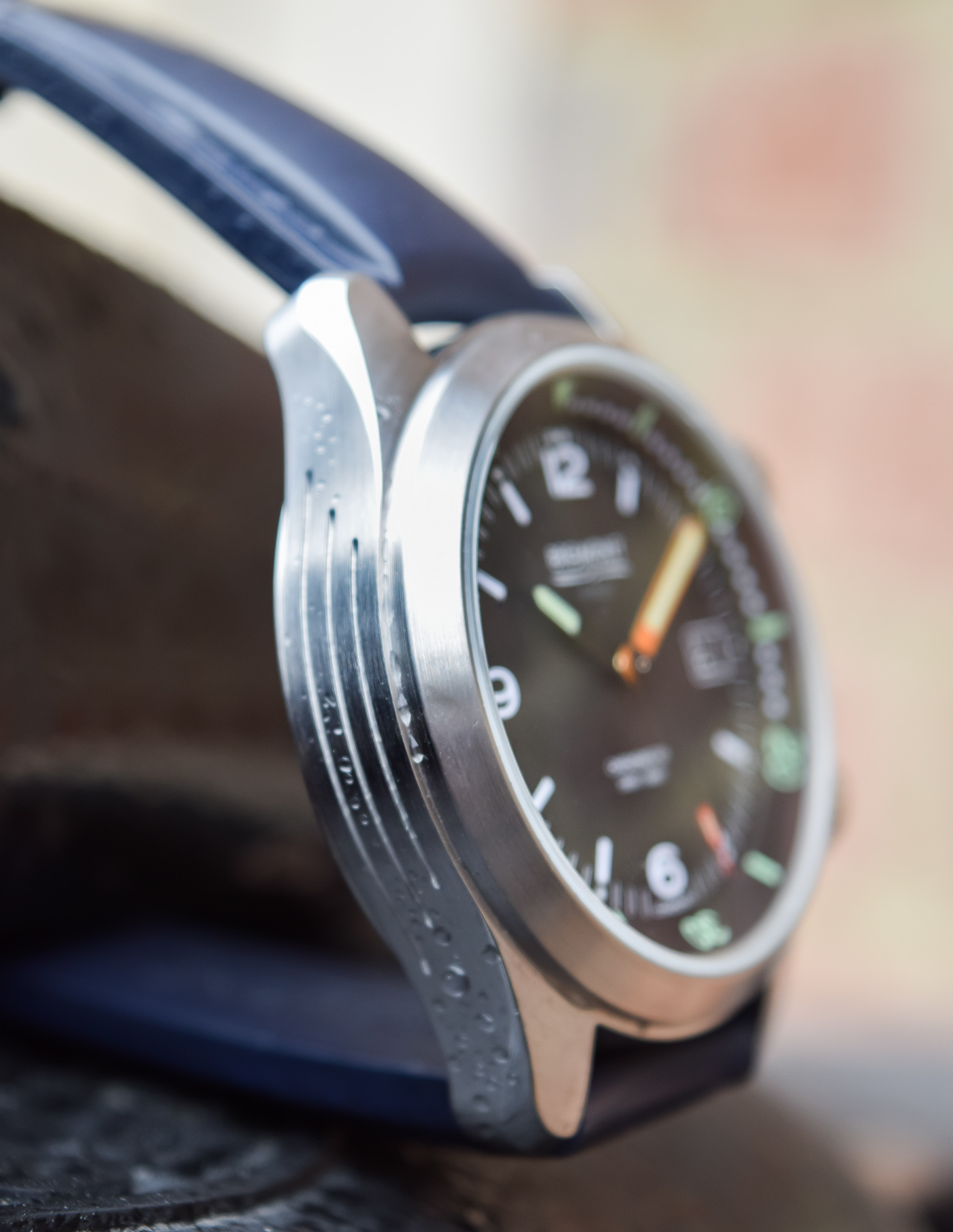
Surrounding the dial is an internal, surprisingly bi-directional, elapsed-time diver’s bezel controlled by a crown at 4 o’clock. The bezel, in contrast to the white Super-LumiNova found on the dial, features Super-LumiNova printed in green, as opposed to white, on the dial (both the bezel and dial lume glow green), which is a nice touch. I’ve touched on the efficacy of internal bezels as a diving tool before, but I’m forced to revisit the issue here. The dual-crown, internal-bezel design looks great and has long been utilized by brands that argue that the design makes accidental movement of the bezel, utilized to track a diver’s bottom time and, therefore, gas supply, impossible.
Frankly, unscrewing a crown to adjust a bezel is a difficult maneuver while wearing virtually any type of diving gloves, an issue exacerbated by the fact that unscrewing a crown also endangers the watch for the often mortal wound which is the ingress of (sea) water. Customarily, with an accurate bottom time in mind, scuba divers don’t set their bezel until they’re floating at the surface and about to dive.
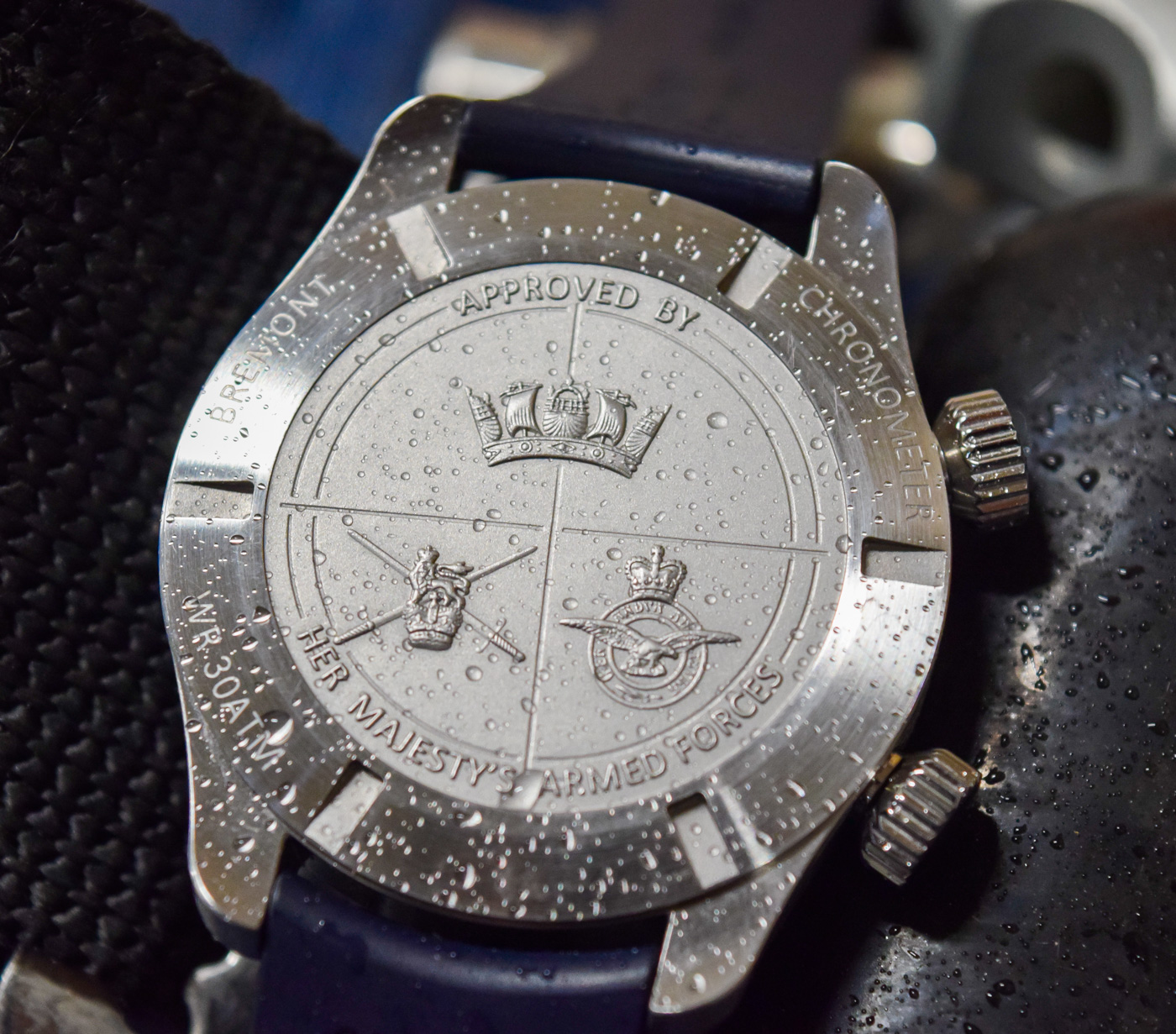
So we’re clear, in the best case scenario, a diver with an internal-bezel watch like the Argonaut jumps into the water, carefully unscrews the crown and sets the bezel as he bobs in seas, then screws the crown back in, all whilst carefully keeping his wrist above water? I can say from experience it’s harder than it sounds. Some will argue that these watches have a measure of water resistance even with an unscrewed crown, but those people are bolder with $3700 worth of Swiss-made timekeeping than I am. For real diving, if I’m wearing a watch at all, it likely wouldn’t be something with an internal bezel for the aforementioned reasons (*quietly and carefully steps down off soapbox wearing fins*).
As a side note, dual-crown, internal bezel-equipped watches have certainly seen and survived subsea service before, the obvious example being the plethora of watches built in the 1960s and ’70s with Super Compressor cases that didn’t even have screw-down crowns. Instead, Super Compressors relied on a complete case concept that was somewhat flexible and became more watertight as pressure was applied. However, the fact is that many diver’s watches of this type flooded, and the tech was eventually all but abandoned — and it certainly isn’t utilized on the Argonaut.
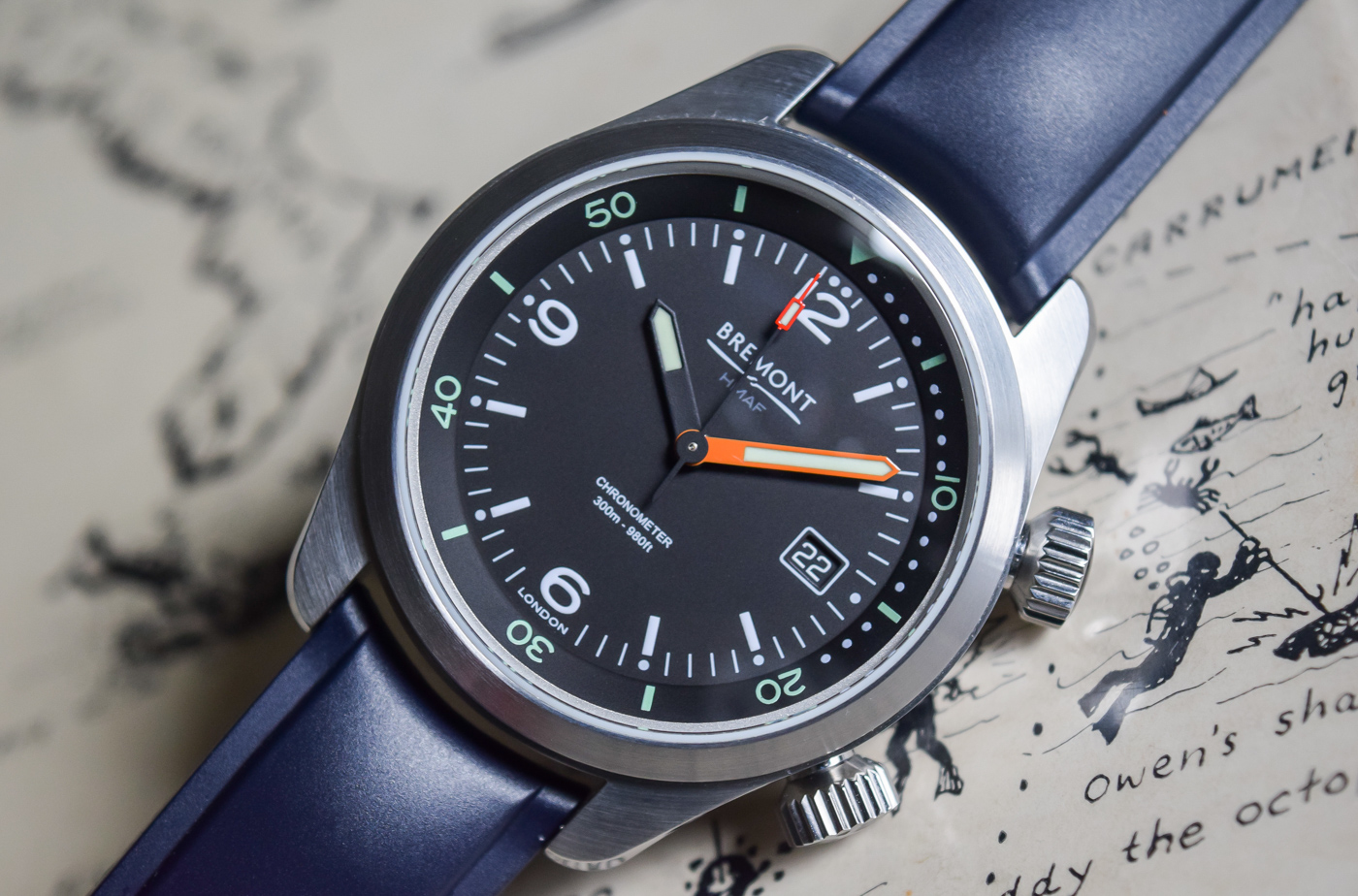
Beyond my practical diving concerns, the action on the Argonaut’s internal bezel is a bit finicky. Unscrewing the crown that controls the bezel, located at 4 o’clock, feels pretty good, but the bezel is bidirectional and lacks any graduations or sensation of “clicking” into place at each minute mark like you would find even within Bremont’s own collection with the MB II. It’s also difficult to line it up exactly where you want, which can be a challenge for the OCD among us, though many, including the Royal Navy operators for which it was theoretically designed, probably don’t care as much. Whatever the case, the Argonaut does look great on the wrist, and with both crowns screwed in, it is likely a brick shithouse, as are a lot of other Bremont watches. If one simply wanted to dive with the watch or, more accurately, take it swimming at the beach, and didn’t care about using the bezel for its intended purpose, I expect the Argonaut would survive as well as any other similarly appointed diver’s watch.

One of Bremont’s signature technical design aspects is its three-piece “Trip-Tick” case, built in England with a back, front, and central “barrel,” which is typically either Titanium or DLC-coated steel. The Argonaut and the rest of the HMAF collection, however, is built with a more traditional two-piece stainless steel case and screw-down caseback design, perhaps in an effort to achieve the aforementioned lower retail price.
The Argonaut’s 42mm-wide case also sports some engraved parallel lines on its sides, which do add a bit of visual interest, if not any utilitarian value. While not Trip-Tick, the steel used in the Argonaut case is still subjected to Bremont’s hardening tech, which promises better scratch-resistance than off-the-peg steel. While the Argonaut case doesn’t really wrap the wrist, the relatively short lug-to-lug makes the Argonaut a solid choice even for smaller wrists, including my own 6.25” wrist, which found the somewhat larger S500 a bit of a stretch unless I wore it over a wetsuit or drysuit.
Combined with an anti-reflective and very slightly domed sapphire crystal, I expect the Argonaut will hold up well, and I haven’t managed to scratch it t aall thus far, despite my best efforts. I always love a good caseback, and the Argonaut’s caseback is pretty interesting, featuring the heraldic crest of the Royal Army, Navy, and Air Force. While the actual depth of the connection between Bremont and those services is a bit tenuous in this case, it does look great and is well executed. I can’t help but wonder why the Royal Navy-oriented Argonaut doesn’t simply feature the Royal Navy crest and not those of the sister services, but I digress. At least there isn’t an engraved diving helmet, Navy SEAL trident, or submersible.
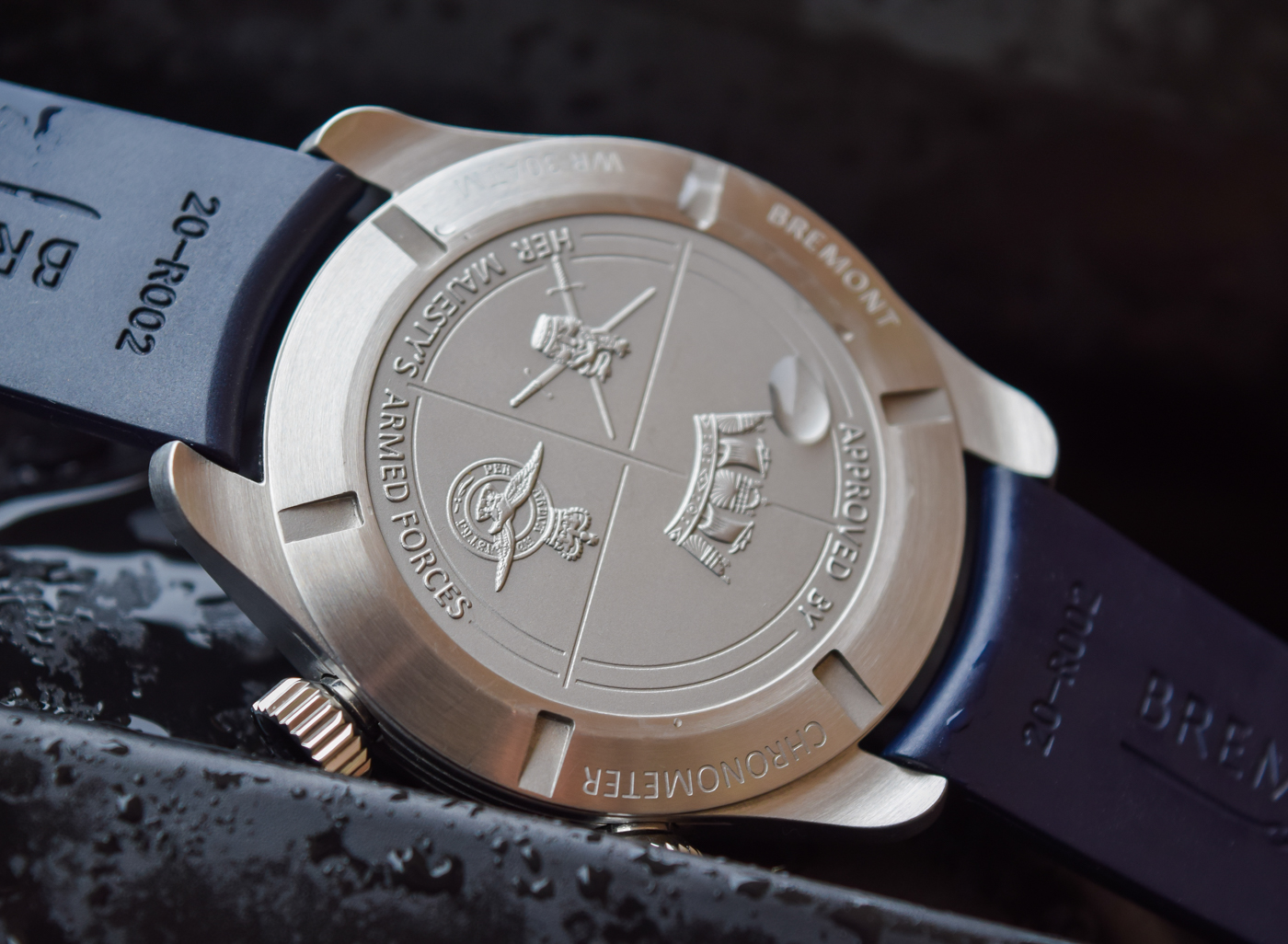
A principal argument for Bremont, in general, is the Chronometer certification enjoyed by much of its range. Her Majesty’s Argonaut is no exception, equipped with a modified caliber 11 1/2’’ BE-92AV automatic chronometer featuring 25 jewels, a Glucydur balance, Anachron balance spring, Nivaflex 1 mainspring, 42-hour power reserve, and a Bremont-signed rotor, all beating at 28,800bph. This caliber, based on the ETA 2836-2, is a solidly built, dependable workhorse capable of fine regulation. I enjoyed excellent timekeeping on the test Argonaut, with an average daily rate of around plus 2 seconds a day, good enough for even the most staunch lovers of regulation.
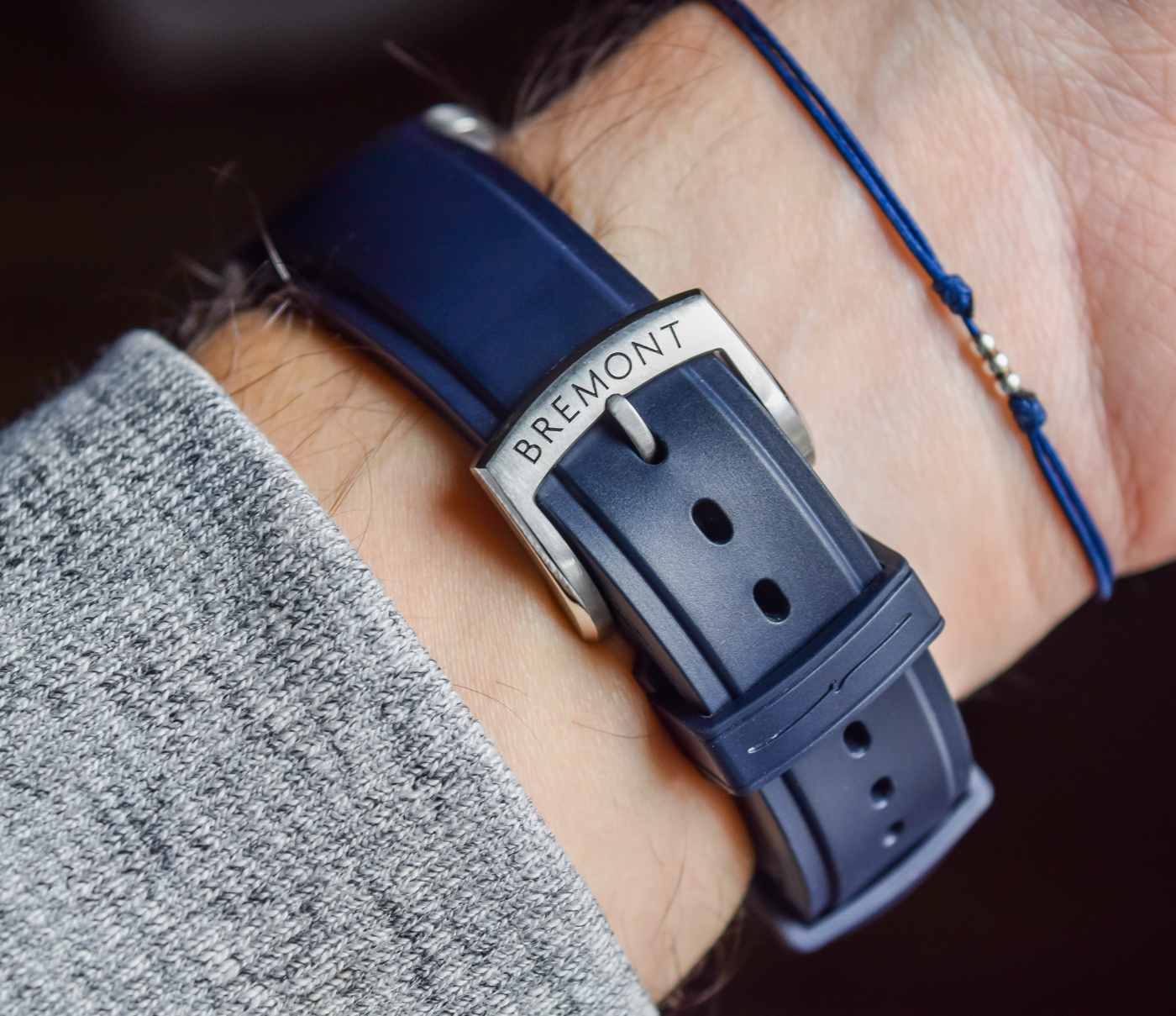
Though the production Argonaut will come as standard on a navy blue sailcloth strap, my pre-production model came with Bremont’s excellent Temple Island rubber strap to fit the 20mm lugs. The strap is extremely dark blue, almost black, and sets off the dial of the Argonaut well. Made of natural rubber, the Temple Island is thick, like takes-a-while-to-break-in thick, but when it does, it’s an extremely comfortable and secure-feeling strap that maintains a more refined look than many other rubber straps, and even many high-end options. I highly recommend this strap on any Bremont that regularly gets wet. Though they’re super-expensive when purchased aftermarket, this strap really is that good.
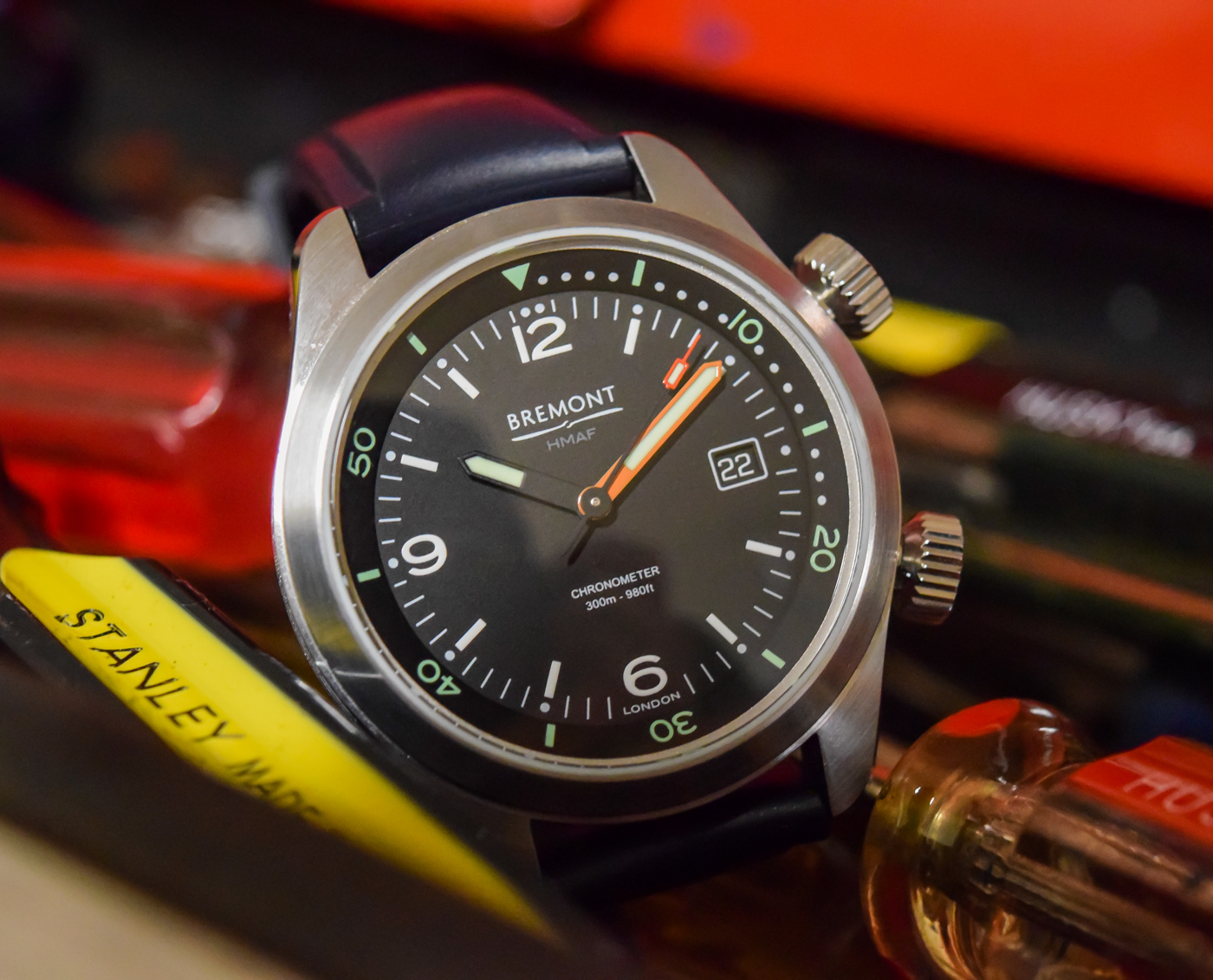
In some ways, I feel like I’ve been hard on the Argonaut. I like the watch. I think it’s a near perfect size for most wrists at 42mm in width, looks really good on, and is highly legible, thanks to a well-designed dial and handset. My only issue is the argument that the Argonaut is a serious tool watch designed for military diving use, which, as I’ve explained, it isn’t. The Ministry of Defense agrees with me when they’re actually buying the watches, having only issued more traditional external-bezel diver’s watches like the famed Rolex Mil-Sub or the more attainable CWC Royal Navy Quartz or SBS Issue watches to their divers (if the MOD elects to issue them an analog watch at all.)
All of that said, the Argonaut is a handsome luxury watch for someone with nautical or Royal Navy military connections, or who appreciates the utilitarian looks of military watches. As a Bremont fan since the beginning, I’m happy to see the brand playing at a lower price point with the HMAF collection, especially while maintaining much of the quality we’ve come to expect from the Henley-on-Thames-based brand. For $3695 on a sailcloth strap, or $4295 on a bracelet, the Argonaut is, by no means, an inexpensive watch, but does allow Bremont fans a less expensive diver’s watch option featuring most of its signature tech with a different look compared to the rest of its diving collection. Visit bremont.com for more information.
Necessary Data
>Brand: Bremont
>Model: HMAF Argonaut
>Price: $3695 on a sailcloth strap or $4295 on a stainless steel bracelet.
>Size: 42mm-wide with 20mm lugs.
>Friend we’d recommend it to first: The fan of military watches with nautical inclinations.
>Best characteristic of watch: An overall attractive and legible dial design.
>Worst characteristic of watch: The internal bezel is a bit finicky in use and flawed in concept for a watch intended as a military diver.

